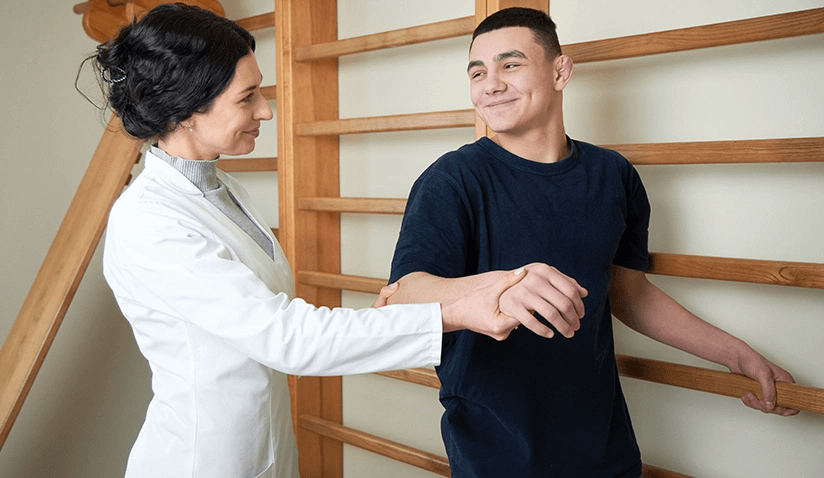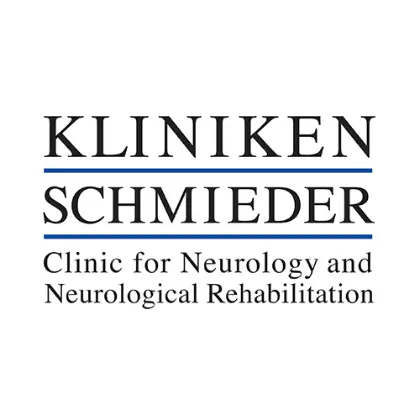Getting Back to Work After a Stroke or Traumatic Brain Injury: Role of Neurorehabilitation

Aspects of Neurorehabilitation
New Stroke Rehabilitation Techniques
Returning to work after experiencing a stroke or traumatic brain injury (TBI) can be a significant milestone in the recovery process. It is a vital step towards regaining independence, financial stability, and a sense of normalcy. However, getting back to work following a stroke or TBI often requires careful planning, support, and collaboration between the individual, healthcare professionals, and the employer.
Neurorehabilitation is a specialized form of therapy that helps people recover and improve their abilities after they have experienced an injury or damage to their brain. Such conditions often result in significant physical, sensory, cognitive, and emotional impairments that can greatly impact a person's quality of life. However, through specialized rehabilitation programs, patients can regain lost function, improve their independence, enhance their overall well-being, and transition back to work smoothly.
Neurological rehabilitation after a stroke or traumatic brain injury involves a combination of exercises, therapies, and techniques designed to help patients relearn skills, adapt to any changes caused by their brain injury, and maximize their potential for recovery and well-being. It focuses on addressing problems with movement, thinking, and emotions that may arise from such conditions.
Aspects of Neurorehabilitation
Neurorehabilitation is an integral part of stroke and TBI recovery as it aims to optimize the individual's functional abilities and promote independence, eventually preparing them to return to work.
Physical Rehabilitation
Physical therapy is crucial to assist patients in regaining their strength, coordination, and balance. To increase mobility and minimize physical limitations, therapists employ a number of treatments, including exercises, gait training, and assistive devices.
Cognitive Rehabilitation
Cognitive impairments resulting from stroke or TBI can significantly impact daily functioning. Cognitive rehabilitation techniques, such as memory exercises, attention training, and problem-solving tasks, help relearn and compensate for deficits, improving overall cognitive function.
Sensorimotor Integration
The brain remaps sensorimotor interactions in an effort to maintain motor control (coordination and control of muscle movements) when the motor cortex is damaged. According to studies, the regeneration of functional sensorimotor contacts within the injured motor system is essential for motor recovery. Motor function appears to be improved by re-establishing sensory processing and sensorimotor linkages in the motor system disrupted by a stroke or TBI. Therefore, sensory therapy can aid in compensating for lost motor function and relearning it.
Speech and Language Therapy
For individuals experiencing speech and language difficulties after stroke or TBI, speech therapy is essential. Speech therapists use exercises and strategies to improve communication skills, enhance speech production, and help to address swallowing difficulties.
Psychological Support
Neurorehabilitation also takes into account the emotional and psychological well-being of patients as they prepare to go back to work. Psychologists and counselors provide support, counseling, and strategies to help cope with the emotional challenges that may arise from their condition.
New Stroke Rehabilitation Techniques
In recent years, there have been advancements in stroke rehabilitation techniques that aim to enhance recovery outcomes and promote neuroplasticity. These innovative approaches offer promising results in improving motor function, cognitive abilities, and overall quality of life for stroke survivors. Here are two notable new stroke rehabilitation techniques:
Constraint-Induced Movement Therapy (CIMT)
CIMT is a technique that involves restraining the unaffected limb while actively engaging the affected limb in intensive therapy. By restricting the use of the unaffected limb, CIMT forces the brain to focus on the affected limb, promoting neural reorganization and motor recovery. CIMT has shown positive results in improving motor control, functional use of the affected limb, and daily activities for stroke survivors.
Robotics-Assisted Rehabilitation
Robotic devices are increasingly being used in stroke rehabilitation to provide intensive and repetitive movement therapy which promotes neuroplasticity and functional recovery. These devices, such as robotic exoskeletons and limb orthoses, assist patients in performing various exercises and movements while also providing real-time feedback and tracking progress. Robotics-assisted rehabilitation offers advantages such as precise control of movement, adaptive assistance, and the ability to customize therapy according to individual needs. It has shown promising results in improving motor function, muscle strength, and coordination in stroke survivors.
Other Technological Advances in Neurorehabilitation
Advancements in technology have revolutionized the field of neurorehabilitation, offering innovative solutions to enhance recovery outcomes. Virtual reality (VR) and augmented reality (AR) are increasingly being used to create immersive and interactive environments for therapeutic purposes. These technologies help patients improve motor skills, balance, and cognitive function through engaging and stimulating activities.
Neurofeedback and brain-computer interfaces (BCIs) have also gained attention in neurorehabilitation. These techniques use real-time monitoring of brain activity to provide feedback and facilitate self-regulation of brain function. They have shown promise in enhancing cognitive function, motor control, and attention skills.
The Takeaway
Neurorehabilitation plays a vital role in stroke and traumatic brain injury recovery, addressing physical, cognitive, and emotional impairments and promoting independence and overall well-being - crucial factors in enabling a smooth transition back to work. Through a multidisciplinary approach, incorporating physical therapy, cognitive rehabilitation, speech therapy, and psychological support, patients can regain lost function, improve mobility, enhance cognitive abilities, and reintegrate into the community.
Technological advancements further enhance the effectiveness of neurorehabilitation, providing innovative solutions for improved outcomes. With ongoing support and maintenance, significant improvements in the quality of life can be achieved.
Frequently Asked Questions (FAQs)
To what degree can one recover from a brain injury?
The extent to which recovery from a brain injury is possible varies widely depending on factors such as the location and severity of the injury, individual characteristics, and the effectiveness of rehabilitation. While some may experience near-full recovery, others may have long-term challenges.
Can a person recover fully after a stroke?
It may take weeks, months, or even years to recover from a stroke. While some people recover fully, others can have long-term or permanent disability. Many people regain all or part of their capacity for self-care. For instance, studies show that those who receive clot-busting medications quickly enough after an ischemic stroke (the most prevalent type of stroke) might make a full recovery. Additionally, therapy that aids in movement, daily tasks, and communication can train survivors whose abilities have been altered by a stroke how to adapt.
Could a brain injury cause an individual to lose the ability to read?
Yes, a brain injury can result in a condition called acquired dyslexia or alexia, which impairs reading abilities. Depending on the location and extent of the brain injury, patients may have difficulty recognizing words, comprehending written language, or processing letters and sounds.
How do traumatic brain injuries affect working memory?
Working memory, which is the capacity to keep and modify information in mind for brief durations, can be impacted by traumatic brain injuries. TBI-related damage to the frontal lobes or other brain regions involved in working memory processes can contribute to these challenges.
How does neuroplasticity help stroke victims?
The connections within the brain and those between the brain and body are damaged by a stroke. However, the brain has the capacity to rewire itself after a stroke, enabling the patient to walk, speak, and use the affected area of the body. This process is known as neuroplasticity. It starts after having a stroke and can last for years.
With rehabilitation exercises, the brain is encouraged to form new connections in the healthy parts that have not been damaged. By strengthening these connections, the brain becomes more adept at regulating the body, enabling more independence in carrying out daily tasks.
Does a stroke cause permanent brain damage?
A stroke can cause permanent brain damage, but the extent and impact of the damage can vary. The severity of the stroke, the location of the affected brain tissue, and the timeliness and effectiveness of medical intervention are important factors in determining the level of permanent damage.

As pioneers in Neurological Rehabilitation since 1950, Kliniken Schmieder has set new medical standards utilizing the latest therapeutic innovations in areas such as physiotherapy, occupational therapy, recreational therapy, and new feedback-guided devices for the upper extremities. The group specializes in comprehensive Neurological Rehabilitation, starting with managing acute neurological illnesses, such as epilepsy and encephalitis, Early Rehabilitation of patients recovering from traumatic brain injury or stroke to Post-Primary Rehabilitation. Depending on the patient's condition, recovering basic functions, achieving independence in activities of daily living, or relearning to swallow or speak are some of the program's goals. Annually, over 14,000 patients from across the world, in all stages of acute and rehabilitative recovery, benefit from their expertise in neuro rehab. Currently, Kliniken Schmieder operates a network of six cohesive clinics across Germany, which have earned global recognition as Centers of Excellence in Neurorehabilitation.
References:
Featured Blogs



